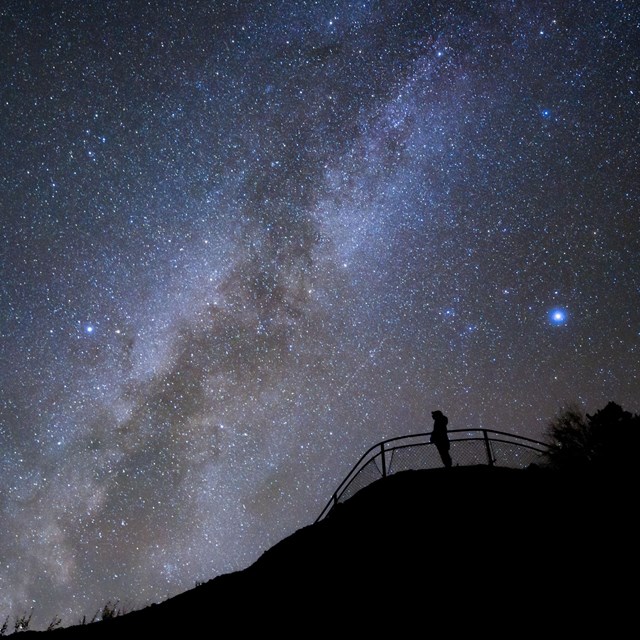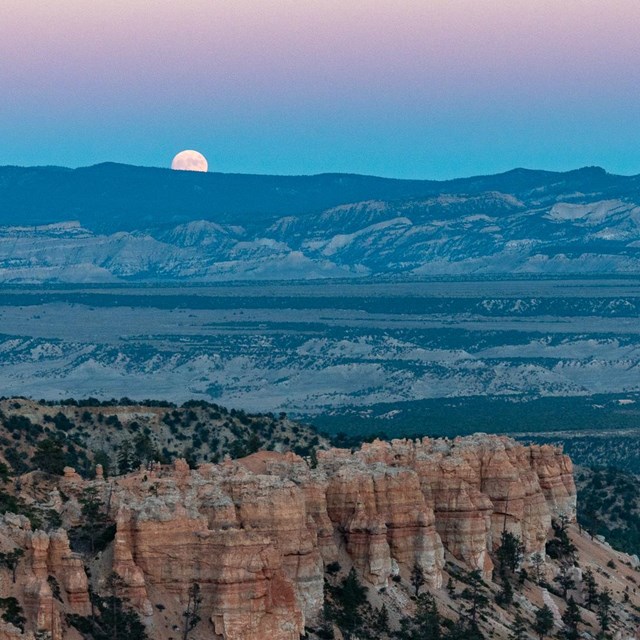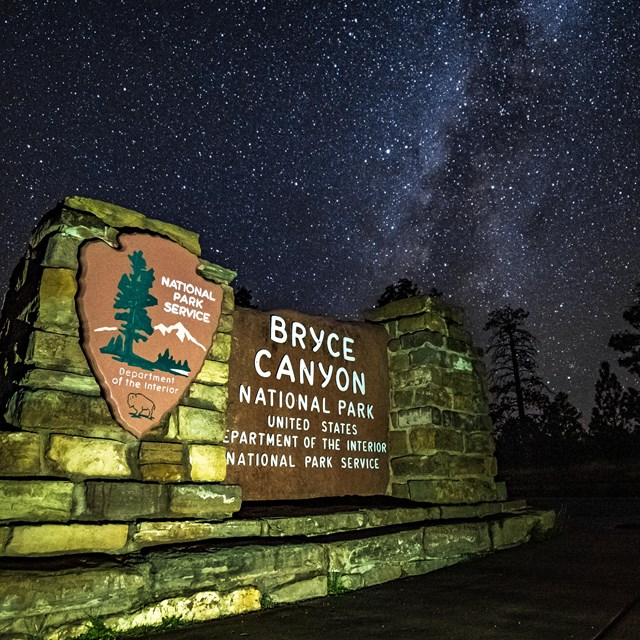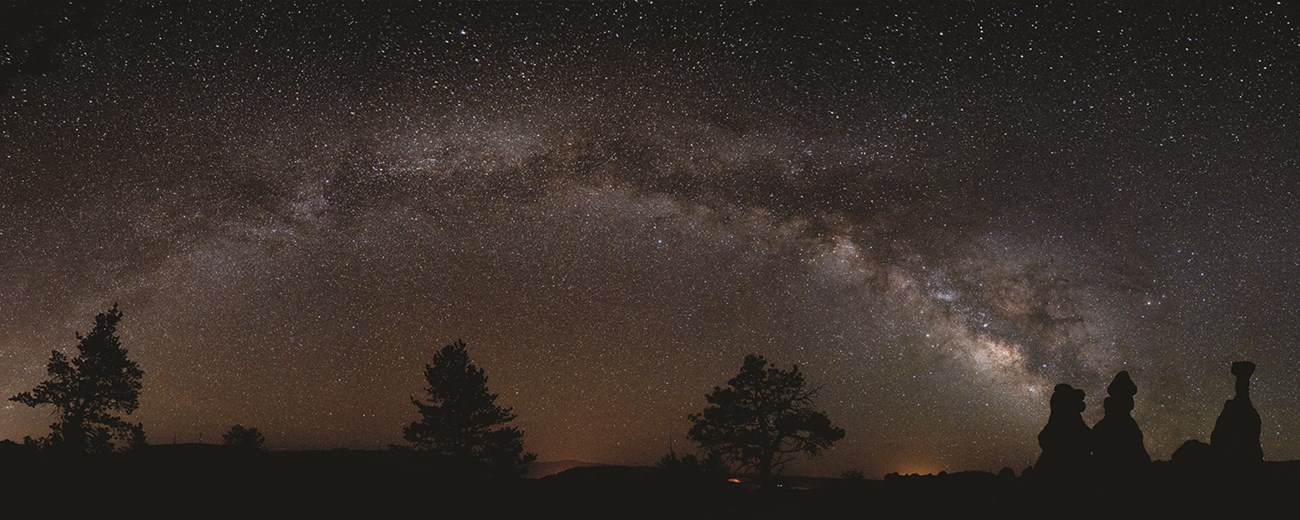
Keith Moore/NPS In 2019, Bryce Canyon National park officially gained International Dark Sky status. Bryce Canyon's high elevation, clean air, and remote location creates some of the darkest skies in the country. During a new Moon on a clear weather night, you can see thousands of stars and the spectacular band of the Milky Way Galaxy shooting across the sky. We take pride in our ability to protect the night skies for present and future generations. Night Sky Viewing
Air Quality and Night SkiesClean and dry air means good visibility. Bryce Canyon National Park also benefits by being a high elevation park far from civilization. The expanse of land you can see from Bryce, also known as our viewshed, is enormous. Our thin clean air is easy to see through and at night it is as dark as dark can be. There are few places left in the world where you can stand in one place and see so much undeveloped land. Even on our busiest days, visitors often remark "When I look out across the Grand Staircase, it kinda' feels like I have the whole planet to myself." Visibility is one of our most treasured resources.On a clear day at Bryce you can see nearly 200 miles to the Black Mesas in eastern Arizona. On a clear dark night, you can see 2.2 million light years or 527,000,000,000,000,000 miles to the Andromeda Galaxy. 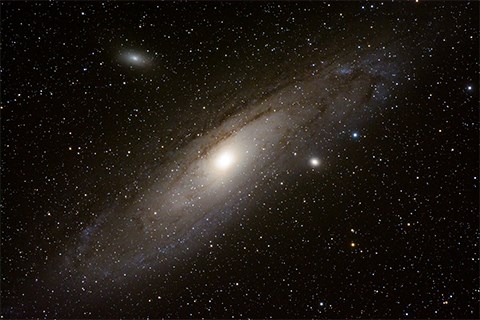
Credit Steve Schultz The first star to appear may actually be a planet, but it is soon followed by Vega, Arcturus and other bright stars. Two hours after sunset comes the combined light of over a billion stars, all too distant to be seen individually by the human eye. Behold, the Milky Way! This stellar strip of light is only a portion of one of our galaxy's spiral arms. What does an entire galaxy look like? Look to the north. Draw a line from Mizar, the middle star in the Big Dipper's handle through the North Star eastward past the zigzag-shaped constellation of Cassiopeia, and you will come to a tiny fuzzy cloud known as M31. This is our sister galaxy, Andromeda, the largest and most distant object visible to the naked eye, measuring 110,000 light years in diameter! 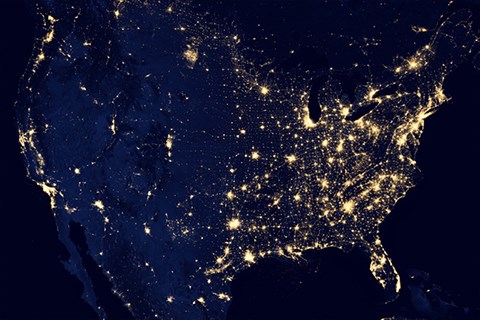
NASA Controversies Around Air QualityPoor air quality is not only unhealthy for the planet (including us humans), it's also just plain ugly. Even on flat land, while standing at ground level visibility should be at least 12 miles (18 km). Few of the world's cities can claim this minimum standard even from a vantage point of a tall skyscraper. There's no short-term solution to air quality. The consumption of fossil fuels is a necessary evil that will persist as long as fossil fuels are still available. However, the emission side effects can be mitigated. For example, the new and expensive scrubbers that have been installed on the smoke stacks at coal-fired electric plants in the Ohio River Valley, are famous for emitting cleaner air than their surroundings. An optimist might say that in reality, they are enormous air filters and also generate huge amounts of electricity. Indeed, federal regulations and tax incentives targeting industry have been effective enough that now the air pollution onus is on automobiles. Daily, for nearly 20 years, Bryce Canyon has been monitoring our air quality and we are happy to report that the trend in air quality has not significantly declined. However, our location and circumstances are unique. Being on the top of a desert plateau, our clearing indices are usually high, inversion seldom occurs, and the air is too thin and dry to carry much pollution. Neighboring urban and industrial centers are not nearly so lucky and unfortunately, most of the pollution we do have originates from these distant locales. However, we are doing more than just monitor the surrounding air. While National Park Service policy has no authority to dictate how you choose to commute to work, several National Parks finance a shuttle system in the hopes that at least while you are visiting us, you will use our mass transit system so as to reduce the vehicle emissions that occur within our boundaries. Ironically enough, light pollution is more pervasive a problem, yet with an easier solution. Reducing light pollution is as easy as throwing a switch. Light pollution comes from both residential and commercial sources. While both sources use crime deterrence and security to justify all night floodlights, advertising studies show that keeping signs illuminated even after business hours results in increased sales throughout the commercial sector. There are lots of good reasons to force back the darkness with light. To many people, light means safety, light means knowledge. What harm does a little light cause? To answer that question all you have to do ask an amateur stargazer. To those who know their stars, a quick glance at that night sky gives them a special sense of security, feeling somewhat at home no matter where they travel. Those who have come to love the night sky, will gaze into the void for hours, gaining an unparalleled sense of inspiration and awe. Preservation of air quality and dark sky means lots of sacrifices, some with real economic impacts, others just require breaking old habits. For example, passing vehicle emission tests does cost time and money, but carpooling and using mass transit are merely behavioral changes. What are the consequences of Bryce Canyon's air quality and viewshed preservation efforts? You'll probably need a flashlight while walking around our visitor center, our campgrounds, and even the Lodge area at night. If you're visiting us by tour bus don't expect your coach to be air-conditioned (or heated depending on season) upon your return from viewing an overlook. In an effort to preserve both natural quiet and air quality, our Park Rangers are instructed to fine tour bus operators $50 (at minimum) for leaving bus engines running while parked. On the plus side, Bryce Canyon offers special Ranger Programs about the night sky throughout our summer season, where our staff will be overjoyed to share with you the wonders of a dark sky. The FutureEven the National Park Service struggles to comply with these efforts. In rural settings, forest fire smoke is a chief source of air pollution. New air quality guidelines are confounding our prescribed fire efforts. In an effort to maintain healthy biologically diverse forests, we have to be careful not to obscure the world class scenery and viewsheds we are also charged with protecting. Another form of air quality that we monitor is natural quiet. In key places throughout the park, we have equipment recording background noise to establish a baseline. The next question we will soon be facing is "What should a National Park sound like?" It is easy to feel insignificant while peering across the Grand Staircase or craning your neck back underneath such vastness, yet ironically, it is within the individual's power to preserve such a view. Use mass transit systems, to reduce air pollution. Fight light pollution in your neighborhood by requesting special streetlight fixtures that direct all the light downward. Replace your porch light with motion sensor security lights that only come on when they are needed. If nothing else, draw your blinds at night. Many places have the potential for Bryce Canyon-quality stargazing. Doing your part to preserve the heavens is literally as simple as throwing a switch. On or off? The choice is ours. |
Last updated: August 6, 2025

